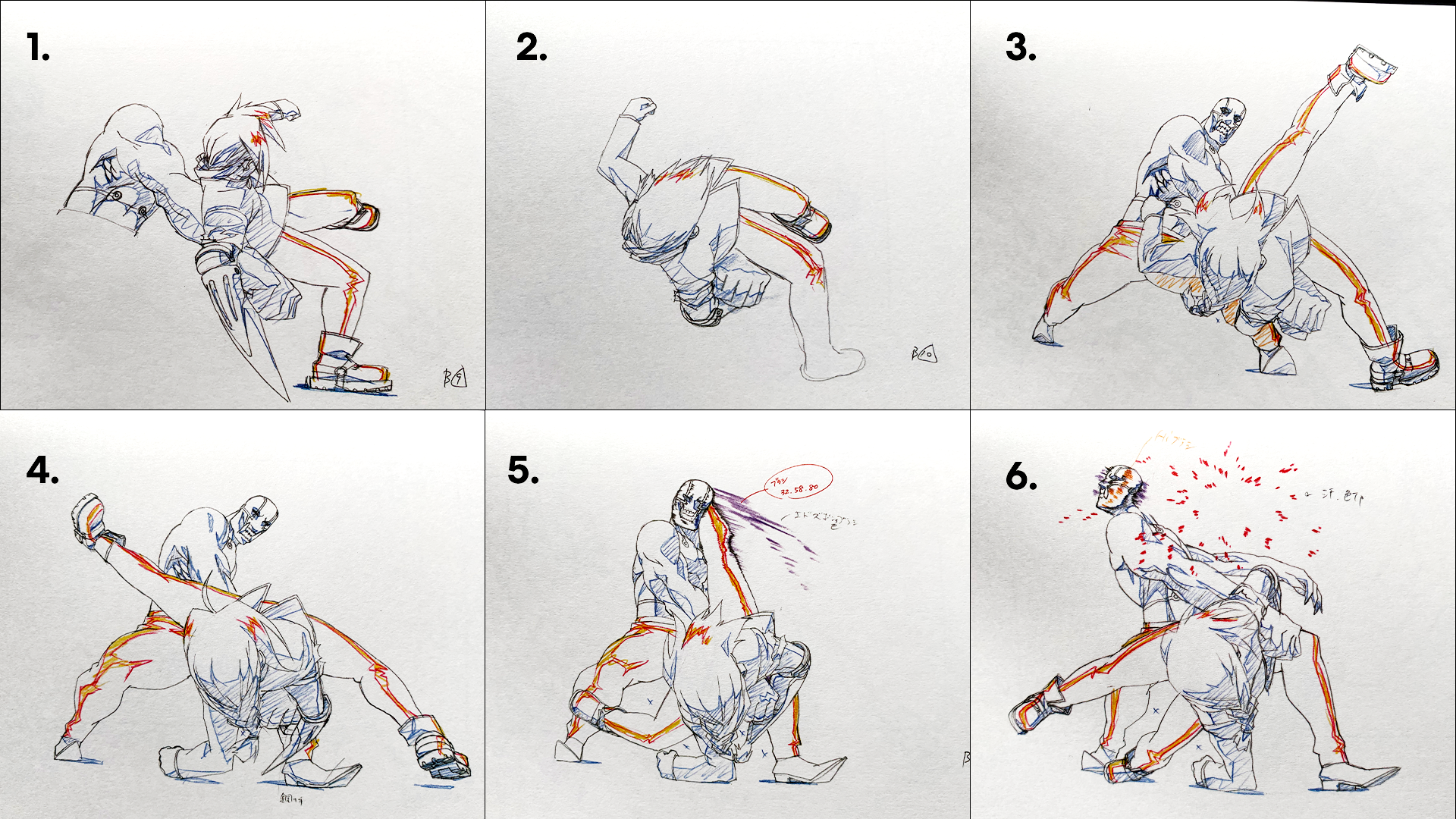Yutaka Nakamura Keeps It Moving
Identifying which style of animation we want to go with for Unegen: The Burning Tree has been one of the more elusive challenges we've had in its creation. Sam and I are first and foremost writers, not illustrators or animators, so it can be tricky finding the correct industry language to describe how the series should look, move and feel.
"Animation style" is a vague term in itself. If you google it you'll find 3D, stop motion, or hand-drawn as generic examples, but I'm referring more to the visual identity of the series rather than the methods involved in making it. We can easily point out that the series is 2D, and heavily inspired by anime, but there's plenty of elements of anime we don't exactly want to pour into the mix. We've found it's best to point out the elements we want versus the ones we don't in order to pin down the visual identity.
Scene drawn by Nakamura from Fullmetal Alchemist.
Framing, shot direction, sound and lighting are elements that we can easily communicate through our screenwriting and video content background. It's the more illustrative elements, like linework, anatomy and art direction that we've found the biggest challenge. This in turn dictates how a character runs, how they eat a meal, how they gesture with their hands in conversation, how they slash a sword, or how they duck from a blow in a fight. In anime alone, there are hundreds of ways to animate a character while they talk, eat, run or fight; and this is where we've had to research other animators and directors techniques to hone in on how our characters move. Let's look at the animator, Yutaka Nakamura and discover his style that's been celebrated in some of the greatest animes of all time.
Scene drawn by Nakamura from Cowboy Bebop.
Yutaka Nakamura is a Japanese animator who has worked on shows such as Cowboy Bebop, Fullmetal Alchemist and Neon Genesis Evangelion. He's highly regarded for his fluid style and choice of camera angles that create immersive action scenes with captivating choreography. Whenever a series needs a fight scene that will make an audience's jaw drop, he's the guy they call. He uses a variety of camera angles; low angles, wide top-down and mid shots all in one scene to immerse the viewer and create a sense of speed and movement. The choreography he depicts feels realistic, as camera angles help add impact to a scene.
Kicks feel more lethal through low angles that almost stretch out Edward Elrich's leg in Full Metal Alchemist.
You feel how close punches come to landing as Spike from Cowboy Bebop casually dodges blow for blow through a tracking mid-shot.
It's animation styles like this that really communicate a feeling of speed and fluidity that we want to channel into our series. There's nothing worse than anime that feels static and rigid; a group of characters standing still as one explains exactly what they're going to do in the next five minutes, or a character that stops mid-fight to let their thoughts pour out exposition and admire their opponent's strength. This is all just crap that eats into the screen-time of an episode so that more episodes can be made.
Sam and I are actively writing scenes that keep our characters moving. Even in dialogue scenes, they can still be picking something up, drinking something or putting on clothes, anything other than standing still! Animators like Nakamura are the key influences we look to in shaping our visual identity, and ensuring we've got an animation style that is engaging and always on the move.
Damien.


